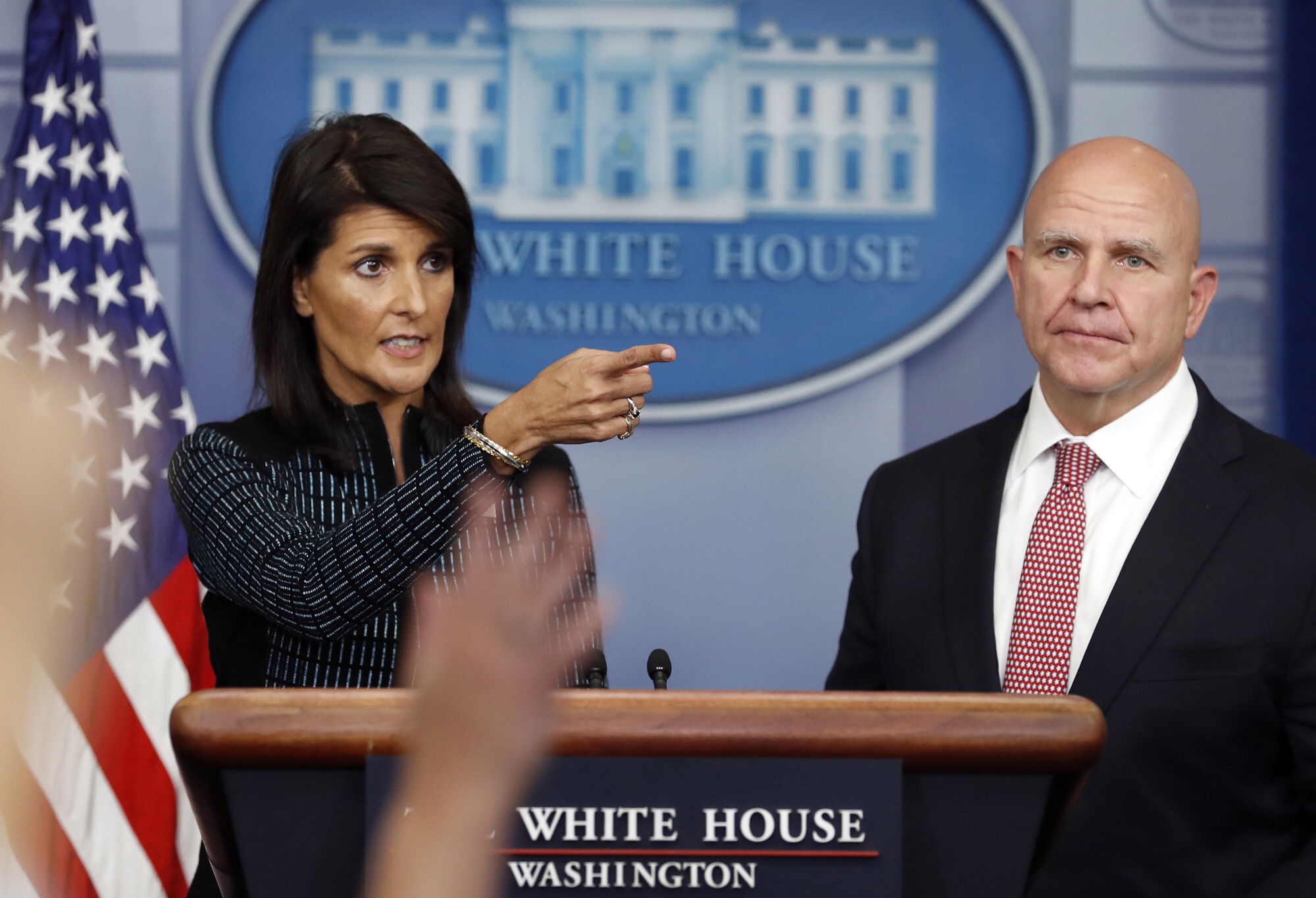Analysis: Will—or When will—the U.S. Strike?
Following this past week’s second firing of a North Korean ballistic missile over Japanese territory, remarks were made in a joint press conference held by U.S. Permanent Representative to the U.N. Nikki Haley, and National Security Advisor Lt. General H.R. McMaster.
 Ambassador Haley said that she’d “hand over” the North Korean issue to Secretary of Defense Jim Mattis for him to solve—if diplomatic efforts continued to fail. The Ambassador’s delivery indicated some exasperation with the lack of diplomatic progress.
Ambassador Haley said that she’d “hand over” the North Korean issue to Secretary of Defense Jim Mattis for him to solve—if diplomatic efforts continued to fail. The Ambassador’s delivery indicated some exasperation with the lack of diplomatic progress.
China will resist any effort to further intervene until, at least, the conclusion of this year’s Communist Party Conference, where President Xi Jinping is expected to further consolidate his power. China has been promoting itself as an official “global power.” Resolving such a crisis as the North Korean nuclear threat, particularly as the Kim regime is a growing thorn in Beijing’s side, would lend credibility to that claim.
Furthermore, proactive engagement by China could mitigate some of the Government’s concerns, such as a U.S. aligned, unified Korean Peninsula, or a mass-exodus of North Korean refugees across the Chinese border.
If this most recent provocation by North Korea against Japan does not cross the line issued by Secretary Mattis, it will be clear as North Korea will continue to test the limits of the U.S., Japan, and South Korea with increasingly aggressive ballistic missile provocations.
U.S. Defense Secretary Outlines Scope of Any Military Action in North Korea
In a statement released outside of the White House following a meeting with U.S. President Donald Trump, Secretary of Defense James Mattis sent a clear warning to North Korea:
“Any threat to the United States or its territories including Guam or our allies will be met with a massive military response, a response both effective and overwhelming.” The Secretary continued, saying, “Kim Jong Un should heed the United Nations Security Council’s unified voice. All members unanimously agreed on the threat North Korea poses. And they remain unanimous in their commitment to the denuclearization of the Korean peninsula. Because we are not looking to the total annihilation of a country, namely, North Korea.”
U.S. military action would be a sudden and massive attack on North Korean nuclear and military assets, for which no prior warning would be given.
Mattis issued his statement while flanked by Marine General Joseph Dunford, Chairman of the Joint Chiefs of Staff. In contrast to the off-the-cuff “fire-and-fury” rhetoric employed by Trump on August 8, Mattis read from a prepared statement and avoided using opaque language, with one exception.
What Constitutes a Threat?
After stating “Any threat to the United States or its territories including Guam or our allies,” Mattis did not provide context for his use of the words “any threat.” Accordingly, it leaves both the White House and the military wiggle room for interpretation.
Mattis’ language could have been intended to justify for the U.S. to use force as a means of self-defense under Article 51 of the U.N. Charter. Action taken under Article 51 requires there be an imminent threat of “armed attack” if the assault has not yet begun, but does not require prior authorization by the U.N. Security Council.
Conditions for Military Action
Mattis’ use of “will be” in setting the conditions for military action against North Korea is critical. He did not say “might” or “would.” In contrast, on August 8, Trump stated that threats “to the United States” would trigger a military response. It was after this that North Korea threatened to target the area surrounding Guam with ballistic missiles.
By including U.S. allies (South Korea and Japan), U.S. territories (like Guam), and the continental United States in his statement, Mattis provided a clear definition as to what would merit a military strike by the U.S.
What Would a U.S. Military Strike on North Korea Look Like?
The Defense Secretary also described what military action by the U.S. against North Korea would look like. In stating that “we [the U.S.] are not looking to the total annihilation of a country, namely, North Korea,” Mattis implied that any military action by the U.S. would likely not be a massive invasion. U.S. military action, rather, would be a sudden and massive attack on North Korean nuclear and military assets, for which no prior warning would be given.
In ending his statement referencing the “unified voice” of the U.N. Security Council, Mattis implied his preference for resolving the situation peacefully. Primarily, Mattis views a diplomatic solution as preferable but has made sure that the United States is ready to use force if necessary.
